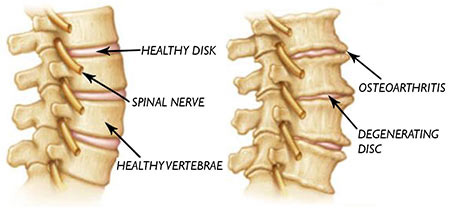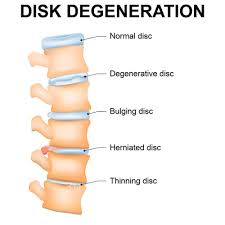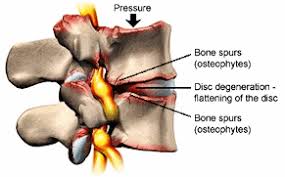

If you have ever had a stiff neck that felt like it was auditioning for a concrete sculpture exhibit, you are probably familiar with how neck pain can put a damper on your day.
Now, imagine that feeling becoming your new normal, thanks to a condition known as degenerative disc disease (DDD).
It is like your neck has aged a few decades faster than the rest of your body, and it is not happy about it.
In this article, we are diving into how degenerative disc disease messes with the natural alignment of your neck, why it happens, and what it means for your daily life.
Article Index:
- What is Degenerative Disc Disease?
- Why Neck Alignment is Important
- How Degenerative Disc Disease Affects the Cervical Spine
- Symptoms and Red Flags
- Real-Life Example: Meet Susan, the Desk Job Warrior
- Can Poor Posture Cause Degenerative Disc Disease?
- Things to Avoid with Degenerative Disc Disease in the Neck
- How Serious is Degenerative Disc Disease in the Neck?
- Living with Degenerative Disc Disease: The Everyday Struggles
What is Degenerative Disc Disease?
Before we get into how degenerative disc disease wreaks havoc on your neck alignment, let us break down what it actually is.
Spoiler alert: despite the scary name, it is not technically a “disease.” Degenerative disc disease refers to the wear-and-tear of the discs between your vertebrae.
These discs are like the shock absorbers of your spine, keeping everything cushioned and flexible.
According to The Spine Journal, as we age, these discs lose hydration and elasticity.
Think of them like those squishy toys that dry up and become rock-hard over time.
This loss of cushion can lead to a host of problems, including, you guessed it, neck alignment issues.
Why Neck Alignment is Important?
A quick overview of why aligning your neck properly is important for your overall health:
Bowling Ball Alert:
Your head weighs about 10–12 pounds—the same as a bowling ball. And your neck, specifically the cervical spine, is built to carry that load with the grace of a tightrope walker.
Spinal Precision Engineering:
The cervical spine consists of seven vertebrae (C1 to C7 – leading to C2 neck pain) that align your head directly over your shoulders. When healthy, it distributes weight evenly and allows for mobility in all directions—rotation, flexion, extension, and lateral bending.
Team Effort:
Muscles, ligaments, intervertebral discs, and facet joints all collaborate like a symphony. Proper alignment means less effort and zero drama for these tissues.
Enter Degenerative Disc Disease (DDD):
DDD is like a termite infestation in your spinal architecture. It causes discs to lose hydration and height, narrowing the space between vertebrae. This throws your head’s center of gravity forward.
Chain Reaction of Chaos:
As the discs degenerate, surrounding ligaments slacken and muscles tighten to compensate. This leads to misalignment, forward head posture, and even “military neck” (loss of cervical curvature).
Chronic Complaints Set In:
Misalignment stresses facet joints and compresses nerve roots, leading to persistent neck pain, stiffness, numbness in the arms, and even tension headaches. According to The Journal of Orthopaedic Research, DDD is a major risk factor for cervical radiculopathy and chronic neck disability.
Not Just Old Age:
While aging is a factor, studies show DDD can start in your 30s—especially if you are sedentary, smoke, or engage in repetitive neck movements.
So yes, when your spinal discs degenerate, your neck starts doing a bad impression of a coat hanger.
How Degenerative Disc Disease Affects the Cervical Spine?
Now let’s get into the nitty-gritty. “Does degenerative disc disease affect the neck?”
Oh, absolutely, and it does so in a not-so-fun way.
When your cervical discs start to degenerate, the space between your vertebrae shrinks.
This causes the vertebrae to move closer together, increasing the likelihood of bone-on-bone friction.
The decreased disc space can also cause the spine to become unstable, leading to compensatory mechanisms like muscle tightening or even bone spurs.
According to The Journal of Orthopedic Science, these bone spurs can add more pressure to the nerves in your neck, exacerbating pain and discomfort.
In short, your neck alignment goes from a well-oiled machine to a creaky, off-kilter mess.
This is when you need to learn the best forward head posture fix.
Symptoms and Red Flags
One of the most common symptoms of degenerative disc disease in the neck is chronic pain that radiates to the shoulders, arms, or even hands.
You might also experience numbness or tingling, which is your body is not-so-subtle way of telling you something is wrong.
Another symptom is a limited range of motion, making everyday activities—like checking your blind spot while driving—an excruciating ordeal.
“How serious is degenerative disc disease in the neck?”
It varies.
While some people experience mild discomfort, others are practically immobilized by the pain.
The seriousness often depends on how much the disc degeneration has progressed.
Meet Susan, the Desk Job Warrior
Let’s talk about Susan, a 45-year-old office worker.
Susan had always been active, but years of sitting at a desk began taking a toll.
She started experiencing neck pain that radiated down her arm, making it hard to even type on her keyboard.
An MRI confirmed she had degenerative disc disease affecting the C5-C6 vertebrae.
The once-thick discs had thinned out, causing her spine to compress and misalign.
Susan had to make major adjustments to her work setup and lifestyle, but she learned to manage her condition.
However, it was a clear reminder of how something as seemingly innocuous as a desk job could contribute to a serious spinal issue.
Can Poor Posture Cause Degenerative Disc Disease?
This is a hot topic in the world of spinal health. “Can poor posture cause degenerative disc disease?”
While poor posture alone is not typically a direct cause, it can certainly speed up the degeneration process.
Years of slouching or holding your head in a forward position can put extra strain on the cervical discs, wearing them down faster.
Physical Therapy Journal notes that prolonged bad posture leads to muscular imbalances, which in turn create more stress on the spinal discs.
So, while posture might not be the original villain, it can definitely be an accomplice.
Things to Avoid with Degenerative Disc Disease in the Neck
If you have been diagnosed with degenerative disc disease (DDD) in the neck, knowing what to avoid is just as important as knowing what to do. Certain activities and habits can worsen the condition and increase discomfort.
Here’s what you should be mindful of:
Avoid high-impact activities – Exercises like running or jumping put excessive pressure on the cervical spine, worsening pain and degeneration. According to Spine.md, opting for low-impact activities like swimming or walking can help maintain mobility without adding strain.
Be cautious with heavy lifting – Lifting heavy objects incorrectly can increase pressure on intervertebral discs. As per Benchmark Physical Therapy, proper lifting techniques, keeping objects close to your body, and avoiding sudden jerking motions can help reduce stress on the neck.
Limit prolonged sitting – Sitting for extended periods, especially with poor posture, can worsen neck pain. Advanced Spine Centers recommends taking breaks to stretch and adjust posture, ensuring that your workstation is ergonomically designed.
Avoid inflammatory foods – Diet plays a role in inflammation, which can exacerbate DDD symptoms. Commons Clinic suggests reducing processed foods, sugars, and unhealthy fats, while increasing anti-inflammatory foods like fruits, vegetables, and lean proteins.
Quit smoking and limit alcohol consumption – Smoking reduces blood flow to spinal discs, impairing their ability to heal, while excessive alcohol dehydrates the discs. The Hospital for Special Surgery warns that eliminating these habits can improve disc health.
Stay active, but avoid a sedentary lifestyle – Lack of movement leads to stiffness and weakens spinal support muscles. News-Medical.net recommends gentle stretching, walking, and yoga to keep the spine mobile.
Watch your sleep position – Sleeping in positions that strain the neck can worsen pain and stiffness. Using a supportive pillow and keeping the spine neutral can promote better sleep and reduce discomfort.
By making conscious lifestyle changes, individuals with cervical DDD can manage symptoms effectively and maintain a better quality of life.
Small adjustments in daily habits and posture can make a big difference in reducing pain and preventing further damage.
How Serious is Degenerative Disc Disease in the Neck?
You might be wondering, “How serious is degenerative disc disease in the neck?”
The severity varies, but in some cases, it can lead to significant complications.
The worst-case scenario?
Spinal cord compression, which is a medical emergency.
According to Neurosurgery Quarterly, severe cases may require surgical intervention to stabilize the spine.
However, many people live relatively normal lives with mild to moderate symptoms.
The key is early detection and management to prevent the condition from worsening.
Living with Degenerative Disc Disease: The Everyday Struggles
“Living with degenerative disc disease in the neck” is not just about managing pain; it is about adjusting your daily activities.
Simple tasks like washing your hair or carrying groceries can become monumental challenges.
Chronic pain can also lead to mental health struggles, such as anxiety and depression.
For example, John, a 50-year-old construction worker, had to give up his physically demanding job because of his neck pain.
The emotional and financial toll was significant, highlighting the far-reaching impact of this condition.
Takeaway: Understanding the Impact
So, how does degenerative disc disease affect neck alignment?
In short, it disrupts the entire ecosystem of your cervical spine, causing a domino effect of problems.
From disc shrinkage and muscle strain to nerve compression, the condition can significantly impact your quality of life.
Understanding the mechanics behind this can help you be more proactive in managing or even preventing further damage.
Degenerative disc disease is no walk in the park, but with the right knowledge, you can navigate its challenges.
Just remember, your neck is a critical part of your anatomy—treat it with care.
References:


